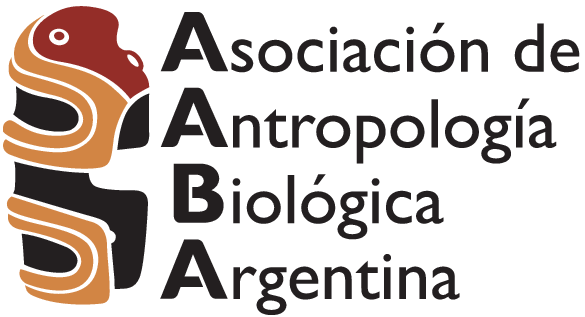Congruencia entre edad esquelética y desarrollo dentario en una muestra osteológica con edad cronológica documentada / Congruence between skeletal age and dental development in an osteological sample with documental age
Abstract
RESUMEN La estimación de la edad en subadultos se considera más precisa que en adultos, dado que durante este período ocurren los principales eventos morfofuncionales del crecimiento y desarrollo y son bien conocidos los cambios progresivos que se producen en el individuo durante su ontogenia. Los estudios de estimación de edad sobre restos esqueléticos infanto-juveniles se apoyan fundamentalmente en dos indicadores: longitud de huesos largos y desarrollo de la dentición. Algunas investigaciones se han enfocado en la comparación de las edades estimadas por ambos indicadores, sin embargo, no son tan frecuentes los estudios que comparen dichas estimaciones en período fetal e infantil. El presente trabajo tiene como objetivo evaluar la relación entre la edad cronológica y la edad estimada por indicadores biológicos en una muestra esquelética de edad cronológica documentada. Para alcanzar este objetivo, se seleccionó una muestra de 35 individuos con edades fetales y hasta los 14 meses postnatales y sin evidencias de patologías. Se compararon las edades cronológicas documentadas y las edades estimadas por longitud de los huesos largos y por estadios de desarrollo de la dentición. Los resultados indican que la estimación de la edad en el período fetal a partir de la dentición o de la longitud de los huesos largos es confiable, en tanto que en el período postnatal la edad dental es el indicador más preciso. Se discuten los resultados en relación con los estudios de crecimiento y se evalúan sus implicancias en estudios bioantropológicos.
PALABRAS CLAVE colecciones osteológicas documentadas; esqueletos fetales e infantiles; subadultos
ABSTRACT Age estimation in subadults is considered to be more accurate than in adults because during this period the main morphological and functional events associated with growth and development occur, and the progressive changes that take place in the individual during its ontogeny are well known. Age estimation studies performed on infantile-juvenile skeletal remains are mainly based on two indicators: length of long bones and tooth development. Some research has focused on comparing the estimated ages yielded by both indicators. However, studies comparing these estimates in fetal and infant period are not as frequent. This paper aims to assess the relationship between chronological age and age estimated by biological indicators in a documented skeletal sample. To achieve this objective, a sample of 35 individuals with fetal age and up to 14 postnatal months without evidence of pathologies was selected. Documental age and age estimated by the length of long bones and stages of dentition development were compared. The results indicate that age estimation by dentition and long bones length is reliable in the fetal period, but dental age is the most accurate indicator in the postnatal period. The results are discussed in relation to growth studies, and their implications for bioanthropological studies are analyzed.
KEY WORDS documented skeletal collections; infant and fetal skeletons; subadults
doi: 10.17139/raab.2014.0016.02.04
Downloads
Metrics
References
AlQahtani SJ, Hector MP, Liversidge HM. 2010. Brief communication: The London atlas of human tooth development and eruption. Am J Phys Anthrop 142:481-490. doi:10.1002/ajpa.21258
Allen LH. 1994. Nutritional influences on linear growth: a general review. Eur J Clin Nutr 48 Suppl 1(1):S75-89.
Buikstra JE, Ubelaker DH. 1994. Standards for datal collection from human skeletal remains. Arkansas: Arkansas Archeological Survey Research Series.
Cardoso HF. 2007a. Accuracy of developing tooth length as an estimate of age in human skeletal remains: the deciduous dentition. Forensic Sci Int 172:17-22. doi:10.1016/j.forsciint.2006.11.006
Cardoso HF. 2007b. Environmental effects on skeletal versus dental development: using a documented subadult skeletal sample to test a basic assumption in human osteological research. Am J Phys Anthropol 132:223-233. doi:10.1002/ajpa.20482
COBIMED. 2012. Comité de bioética Facultad de Ciencias Médicas (UNLP). Aprobación del protocolo: integración y análisis de la Colección Osteológica Prof. Dr. Rómulo Lambre. Exp: 0800-013812/12-000.
Cunha E, Baccino E, Martrille L, Ramsthaler F, Prieto J, Schuliar Y, Lynnerup N, Cattaneo C. 2009. The problem of aging human remains and living individuals: a review. Forensic Sci Int 193:1-13. doi:10.1016/j.forsciint.2009.09.008
Chumlea WC, Guo SS. 2002. The assessment of human growth. En: Cameron N, editor. Human growth and development. San Diego: Academic Press. p 349-361.
Demirjian A, Goldstein H, Tanner JM. 1973. A new system of dental age assessment. Hum Biol 45:211-227.
Elamin F, Liversidge HM. 2013. Malnutrition has no effect on the timing of human tooth formation. PLoS ONE 8(8):e72274. doi:10.1371/journal.pone.0072274
Eveleth PB. 1986. Population differences in growth: environmental and genetic factors. En: Falkner F, Tanner JM, editores. Human growth: a comprehensive treatise. New York: Plenum Press. p 221-239.
Fazekas IG, Kósa F. 1978. Forensic foetal osteology. Budapest: Akademiai Kiadó Publishers.
Franklin D. 2010. Forensic age estimation in human skeletal remains: current concepts and future directions. Legal Med
(Tokyo) 12:1-7. doi:10.1016/j.legalmed.2009.09.001
García Mancuso, R. 2008. Preservación de restos óseos humanos. Análisis de una muestra contemporánea. La Zaranda de Ideas 4: 43-54
García-Mancuso R. 2013. Análisis bioantropológico de restos esqueletales de individuos subadultos. Diagnóstico de edad y sexo, validación técnico metodológica. Tesis Doctoral Inédita. Facultad de Ciencias Naturales y Museo. Universidad Nacional de La Plata. Disponible en: http://sedici.unlp.edu.ar/handle/10915/28947.
Guimarey LM. 2004. Crecimiento y desarrollo físico. En: Morano J, editor. Tratado de Pediatría. Buenos Aires: Editorial Atlante. p 121-138.
Huxley AK. 2005. Gestational age discrepancies due to acquisition artifact in the forensic fetal osteology collection at the National Museum of Natural History, Smithsonian Institution, USA. Am J Foren Med Path 26:216-220. doi:10.1097/01.paf.0000176281.96564.29
Ingvarsson-Sundström A. 2003. Children lost and found: a bioarchaeological study of middle Helladic children in Asine with a comparison to Lerna. Tesis Doctoral Inédita.. Uppsala University. Uppsala. Suecia.
Irurita Olivares J, Aleman Aguilera I, Viciano Badal J, De Luca S, Botella Lopez MC. 2013. Evaluation of the maximum length of deciduous teeth for estimation of the age of infants and young children: proposal of new regression formulas. Int J Legal Med. Sn/sn.http://link.springer.com/article/10.1007%2Fs00414-013-0903-y
Johnston FE. 1962. Growth of the long bones of infants and young children at indian Knoll. Am J Phys Anthropol 20:249-254. doi:10.1002/ajpa.1330200309
Johnston FE. 2002. Social and economic influences on growth and secular trends. En: Cameron N, editor. Human growth and development. San Diego: Academic Press. p 197-211.
Krenzer U. 2006. Compendio de métodos antropológico forenses para la reconstrucción del perfil osteo-biológico. Serie de Antropología Forense. Guatemala: Centro de Analisis Forense y Ciencias Aplicadas (CAFCA).
Lampl M, Johnston FE. 1996. Problems in the aging of skeletal juveniles: perspectives from maturation assessments of living children. Am J Phys Anthropol 101:345-355. doi:10.1002/(SICI)1096-8644(199611)101:3<345::AIDAJPA4>3.0.CO;2-Y
Liversidge HM, Molleson TI. 1999. Developing permanent tooth length as an estimate of age. J Forensic Sci 44:917-920.
Luna LH. 2012. Validación de métodos para la generación de perfiles de mortalidad a través de la dentición. Rev Arg Antrop Biol 14:33-55.
Miles AEW, Bulman JS. 1994. Growth curves of immature bones from a Scottish island population of sixteenth to mid-nineteenth century: Limb-bone diaphyses and some bones of the hand and foot. Int J Osteoarchaeol 4:121-136. doi:10.1002/oa.1390040205
Maresh MM. 1970. Measurements from roentgenograms. En: McCammon RW, editor. Human growth and development. Springfield: Charles Thomas. p 157-200.
Moorrees CFA, Fanning EA, Hunt EE. 1963a. Age variation of formation stages for ten permanent teeth. J Dent Res 42:1490-1502. doi:10.1177/00220345630420062701
Moorrees CFA, Fanning EA, Hunt EE. 1963b. Formation and resorption of three deciduous teeth in children. Am J Phys Anthropol 21:205-213. doi:10.1002/ajpa.1330210212
Norgan NG. 2002. Nutrition and growth. En: Cameron N, editor. Human growth and development. San Diego: Academic Press. p 139-164.
Oyhenart E, Dahinten S, Alba J, Alfaro E, Bejarano I, Cabrera G, Cesani MF, Dipierri J, Forte L, Lomaglio D, Luis MA, Luna ME, Marrodán MD, Moreno Romero S, Orden AB, Quintero FA, Sicre JA, Torres MF, Verón JA, Zavatti JR. 2008. Estado nutricional infanto juvenil en seis provincias de argentina: variacion regional. Rev Arg Antrop Biol 10:1-62.
Oyhenart EE, Torres MF, Quintero FA, Luis MA, Cesani MF, Zucchi M, Orden AB. 2007. Estado nutricional y composición corporal de niños pobres residentes en barrios periféricos de La Plata, Argentina. Rev Panam Salud Publica 22:194-201. doi:10.1590/S1020-49892007000800006
Pinhasi R. 2007. Growth in archaeological populations. En: Pinhasi R, Mays S, editores. Advances in human palaeopathology. Chichester: John Wiley & Sons. p 363-380.
Salceda SA, Desántolo B, García-Mancuso R, Plischuk M, Inda AM. 2012. The ‘Prof. Dr. Rómulo Lambre’ collection: an Argentinian sample of modern skeletons. HOMO 63:275-281. doi:10.1016/j.jchb.2012.04.002
Salceda SA, Desántolo B, García-Mancuso R, Plischuk M, Prat G, Inda A. 2009. Integración y conservación de la colección osteológica “Profesor Doctor Rómulo Lambre”: avances y problemáticas. Rev Arg Antrop Biol 11:133-141.
Saunders SR. 2008. Juvenile skeletons and growth related studies. En: Katzemberg MA, Saunders S, editores. Biological anthropology of the human skeleton. New Jersey: John Wiley & Sons, Inc. p 117-147.
Saunders SR, Hoppa RD. 1993. Growth deficit in survivors and non-survivors: Biological mortality bias in subadult skeletal samples. Amer J Phys Anthropol 36(S17):127-151. doi:10.1002/ajpa.1330360608
Schell LM, Knutsen KL. 2002. Environmental effects on growth. En: Cameron N, editor. Human growth and development. San Diego: Academic Press. p 165-195.
Scheuer L, Black S. 2000. Developmental juvenile osteology. Londres: Academic Press.
Shrimpton R, Victora CG, de Onis M, Lima RC, Blossner M, Clugston G. 2001. Worldwide timing of growth faltering: implications for nutritional interventions. Pediatrics 107:E75. doi:10.1542/peds.107.5.e75
Tanner JM. 1988. Human growth and constitution. En: Harrison GA, Tanner JM, Pilbeam DR, Baker PT, editores. Human biology: an introduction to human evolution, variation, growth and adaptability. Nueva York: Oxford University Press. p 339-435.
Ubelaker DH. 1987. Estimating age at death from immature human skeletons: an overview. J Forensic Sci 32:1254-1263
Downloads
Published
How to Cite
Issue
Section
License
The RAAB is a diamond-type open access journal. There are no charges for reading, sending or processing the work. Likewise, authors maintain copyright on their works as well as publication rights without restrictions.























